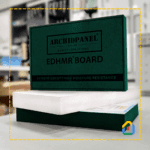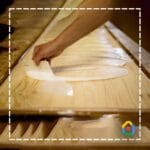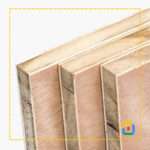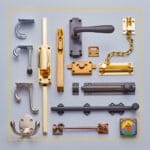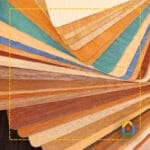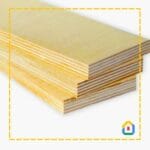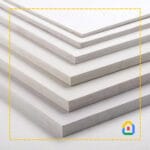India is a land of diverse and vibrant cultures, and its architectural and interior design reflect this rich tapestry of traditions. One of the key elements that have made a significant impact on the design landscape in India is Decorative Plywood. This versatile material combines functionality with aesthetics, allowing designers and architects to infuse unique and eye-catching elements into their projects. In this comprehensive guide, we will explore the world of Decorative Plywood in India, unraveling its characteristics, applications, types, advantages, and much more.
Understanding Decorative Plywood
What is Decorative Plywood?
Decorative Plywood, as the name suggests, is plywood that has been specifically designed and manufactured to enhance the visual appeal of interiors and exteriors. It is not just a functional building material; it is a canvas for creativity. Decorative Plywood combines the structural strength of traditional plywood with a decorative surface that can mimic various wood grains, textures, colors, and patterns.
Composition
Decorative Plywood is composed of layers or plies of wood veneer, just like standard plywood. However, what sets it apart is the addition of a decorative veneer on the surface. The key components of Decorative Plywood include:
- Core Plywood: The core layers of Decorative Plywood are typically made from hardwood or softwood veneers. These layers provide strength and stability to the plywood.
- Decorative Veneer: The surface layer of Decorative Plywood is a decorative veneer. This veneer can be made from various wood species, each offering unique grain patterns, colors, and textures. It is the decorative veneer that gives Decorative Plywood its visual appeal.
- Adhesive: Adhesive, such as phenol-formaldehyde or urea-formaldehyde resin, is used to bond the veneer layers together. This adhesive is chosen for its strength and durability.
Manufacturing Process
The manufacturing process of Decorative Plywood involves several key steps:
- Veneer Selection: Careful selection of high-quality veneer sheets is essential, with an emphasis on the aesthetics of the wood grain, color, and texture.
- Gluing: The decorative veneer is glued to the core plywood using a strong adhesive. The veneer is carefully aligned to achieve the desired visual effect.
- Pressing: The veneer and core layers are placed in a hydraulic press, where they are subjected to high pressure and heat. This process bonds the layers together and activates the adhesive, creating a solid, stable sheet of Decorative Plywood.
- Cutting and Finishing: The finished Decorative Plywood sheets are cut to size, sanded to achieve a smooth surface, and trimmed to remove any defects.
Types of Decorative Plywood
Decorative Plywood comes in various types, each catering to different design preferences and applications. In India, some of the popular types of Decorative Plywood include:
1. Veneer Plywood
Veneer Plywood features a thin layer of real wood veneer on the surface. This veneer can be sourced from a wide range of wood species, including oak, teak, maple, walnut, and more. Veneer Plywood allows the natural beauty of the wood to shine through, showcasing its unique grain patterns and colors.
2. Laminate Plywood
Laminate Plywood features a decorative layer made of high-pressure laminate (HPL) or low-pressure laminate (LPL). These laminates come in an extensive array of colors, patterns, and textures, making them highly versatile for various design styles. Laminate Plywood is known for its durability and resistance to wear and tear.
3. Melamine Plywood
Melamine Plywood features a decorative layer made of melamine-impregnated paper that is thermally fused to the plywood surface. Melamine Plywood offers a smooth and uniform finish and is available in a wide range of solid colors and wood grain patterns. It is prized for its affordability and ease of maintenance.
4. Particleboard Core Plywood
Particleboard Core Plywood features a core made of particleboard or MDF (medium-density fiberboard). The surface is veneered or laminated to achieve the desired decorative effect. This type of Decorative Plywood is often used for furniture and cabinetry, offering a smooth and consistent surface.
5. Blockboard Core Plywood
Blockboard Core Plywood features a core made of solid wood strips or blocks, which are sandwiched between veneer or laminate layers. This type of Decorative Plywood provides enhanced strength and is often used for applications requiring structural stability.
6. Decorative Film Faced Plywood
Decorative Film Faced Plywood combines the durability of film-faced plywood with decorative finishes. It is commonly used in applications where both aesthetics and resistance to moisture and wear are important, such as formwork in construction.
Advantages of Decorative Plywood
Decorative Plywood offers a multitude of advantages that make it a preferred choice for designers, architects, and builders:
1. Aesthetic Versatility
One of the primary advantages of Decorative Plywood is its ability to mimic the appearance of various wood species, textures, and patterns. This versatility allows designers to achieve a wide range of aesthetics, from rustic and traditional to modern and contemporary.
2. Cost-Effective
Decorative Plywood provides a cost-effective alternative to solid wood.
It allows for the creation of high-end finishes without the associated price tag.
3. Strength and Stability
Underneath its decorative surface, Decorative Plywood maintains the strength and stability of standard plywood. It can be used for structural applications while offering aesthetic appeal.
4. Durability
Decorative Plywood is designed to withstand wear and tear, making it suitable for high-traffic areas, furniture, and cabinetry.
5. Ease of Maintenance
Maintaining Decorative Plywood is relatively simple. Regular cleaning with a damp cloth is often sufficient to keep it looking pristine.
6. Environmentally Friendly
Many Decorative Plywood manufacturers prioritize sustainable sourcing and manufacturing practices, making it an eco-friendly choice for environmentally conscious projects.
Applications of Decorative Plywood
Decorative Plywood finds its place in a wide array of applications in India’s architectural and interior design landscape:
1. Furniture
Decorative Plywood is extensively used for crafting furniture, including tables, chairs, cabinets, wardrobes, and more. Its aesthetic versatility allows for furniture designs that complement various interior styles.
2. Cabinetry
In kitchens, bathrooms, and other areas, Decorative Plywood is used for cabinetry and shelving. It provides both functionality and visual appeal.
3. Wall Paneling
Decorative Plywood is employed for wall paneling to create textured and visually appealing wall surfaces. It can be used in residential, commercial, and hospitality spaces.
4. Flooring
Some types of Decorative Plywood are suitable for flooring applications. It offers a durable and visually striking flooring option.
5. Doors
Decorative Plywood is used to construct doors, including interior doors and exterior entry doors, enhancing the aesthetics of homes and buildings.
6. Partitions and Room Dividers
In commercial and office spaces, Decorative Plywood is used to create partitions and room dividers that provide both privacy and a decorative element.
7. Ceiling Treatments
Decorative Plywood is used for ceiling treatments, such as coffered ceilings and decorative beams, adding depth and dimension to interiors.
8. Retail Displays
In retail environments, Decorative Plywood is utilized for creating visually appealing and functional displays that showcase products effectively.
9. Exhibition Booths
In the events and exhibition industry, Decorative Plywood is used to construct eye-catching and customizable booth designs.
10. Interior Decor
Decorative Plywood can be incorporated into various interior decor elements, including feature walls, headboards, and custom-designed pieces that serve as focal points in a room.
Maintenance and Care
Proper maintenance and care are essential to ensure the longevity and beauty of Decorative Plywood:
- Regular Cleaning: Clean the surface of Decorative Plywood regularly with a damp, soft cloth to remove dust and dirt. Avoid abrasive cleaners that could damage the finish.
- Avoid Moisture: Decorative Plywood is not inherently waterproof. Avoid prolonged exposure to moisture, and use appropriate finishes or sealants if the plywood will be exposed to humidity or water.
- Protection from Sunlight: Direct and prolonged exposure to sunlight can fade the colors and patterns of Decorative Plywood. Use window coverings or UV-protective films to shield it from excessive sunlight.
- Prevent Scratches: Place felt pads under furniture legs to prevent scratches on the surface of Decorative Plywood. Avoid dragging heavy objects across it.
- Repairs: Address any damage, such as scratches or dents, promptly to prevent further deterioration. Depending on the severity of the damage, repairs may involve refinishing or patching.
Conclusion
Decorative Plywood in India has evolved from being just a functional building material to a canvas for creative expression. Its ability to combine aesthetic versatility with structural strength has made it an invaluable asset in the world of interior and exterior design. As India’s architectural and design landscape continues to evolve, Decorative Plywood stands as a testament to the fusion of tradition and innovation, allowing designers and architects to infuse beauty and functionality into their projects. Whether it’s enhancing the aesthetics of furniture, cabinetry, or interior spaces, Decorative Plywood continues to play a pivotal role in shaping India’s design narrative.

